?
Loafer Mountain Parkway in Salem officially opened to the public Friday, providing a more direct route to the Interstate 15 freeway for Elk Ridge, Salem and Woodland Hills residents.
The existing routes for those communities to travel to the freeway are Main Street in Payson and Spanish Fork. With this new parkway, congestion is expected to decrease significantly.
This new 2.5-mile road connects state Route 164 (8000 South) and S.R. 198 (Elk Ridge Drive) in Salem.
“This means a lot to all of the surrounding communities because it’s direct access to the freeway and to medical care,” said Utah County Commission Chair Amelia Powers Gardner. “This road could literally be life or death for somebody in Elk Ridge who’s trying to get to a hospital; they now have a direct route.”
This is just the first phase of the project. The next and final phase will be the complete reconstruction of a segment of Elk Ridge Drive to 11200 South, which connects to Loafer Mountain Parkway, according to a press release. This construction will begin as early as January, and when the total project is complete it will total 4.5 miles.
Thursday afternoon, a ribbon strung across the road was cut by Utah County Commission Vice Chair Brandon Gordon to signify the official opening of the road. The cutting of the ribbon was followed by a motorcade for the first vehicles to drive on the newly opened road. Vehicles representing all of the area’s residents drove in a line down the long stretch of road, including construction vehicles, tractors, sports cars, police cars, ambulances, fire trucks, pickup trucks and antique vehicles.
The $40 million project was funded by the county, because as both commissioner Gordon and Powers Gardner explained to the Daily Herald, it is a regional project. “It wouldn’t make sense for the city of Salem to be the one leading it and paying for it because it benefits the citizens as a greater whole,” Powers Gardner said.
Gordon explained that usually development spurs road construction. But in Salem and much of South Utah County, farming remains highly prevalent. “This is government partnership, working with the cities to bridge the gap where development is not happening through here; we’re still farming,” he said. “So, the fact that we’ve been able to pull this off, I think, is a huge win and just speaks to local elected officials and landowners working together.”
The ground was broken on Loafer Mountain Parkway on Nov. 14, 2022, by Kenny Seng Construction, but plans and concepts for the road began decades ago, when many current city and county leaders were still in grade school. Salem Mayor Kurt Christensen said when this road was first being discussed, he remembers the county saying they had the money to fund it, which was $3 million to $5 million at the time.
Powers Gardner explained the most challenging and longest part of this project was obtaining the land needed for the road. However, it was not due to unwilling landowners, she said, but because they wanted to ensure the design of the road worked well for each party involved.
According to Powers Gardner, many of the property owners involved are multigenerational farmers. “This affects their operations significantly for generations,” she said. “So, we wanted to handle that with sensitivity, but also recognizing that this has been a regional project that’s been in the works for decades.”
Added Gordon, “We’re also a very land/property rights-friendly commission right now. … We want them to farm for as long as they want to, and we want them also to exercise their rights if they want their kids to build on their farm and build homes and homestead themselves as well.”
Much of the leadership involved, including Christensen, Gordon and members of Kenny Seng Construction, have direct connections to farming, whether they grew up in northern Utah County or worked on their family farm.
The road goes through Christensen’s family farm, and he joked in his speech that “I’m still trying to figure out how to get my cows from that side of the road to this side of the road.”
“It does mean more than just a road to us,” he said. “Some of us that have lived here all our lives and had the land down here, it means a change of life, but it’s going to be a good change.”
Much of the design of the road is specifically for farmers, such as pullouts for the farms along the road and large shoulders to give room for the heavy farming equipment they will need to drive down the road.
“We didn’t just draw a line on a map and say, ‘You need to sell us that land, and this is where the road is gonna go,'” Powers Gardner said. “They (the farmers) came and said, ‘This is an integral part of my farming operation. This is where we get water to our cattle. We cannot disrupt this.’ So then we would say, ‘OK, well, what if we shift the road like this?'”
She said these were common conversations with the farmers throughout the entire process. She continued, “We worked with them as partners and said, ‘Help us understand your operation and how we can minimize the effects of the impact on your operation as much as possible.'”
Join thousands already receiving our daily newsletter.
I'm interested in (please check all that apply)

 435.215.7170
435.215.7170




 Service Areas
Service Areas























